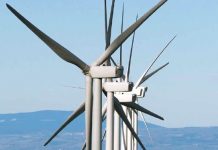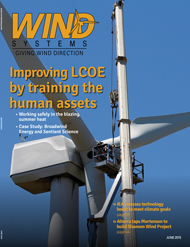No, I don’t mean the four-letter “s-word” that likely comes to your mind. In fact, this “s-word” isn’t profane at all. It’s profound. It shaped my life and career choice from an early age, and it has the power to shape the future of the U.S. wind energy industry.
The word? Story.
I’ve written on the subject of story on several occasions, most recently in a similar column for our sister publication Gear Solutions.
The following is an excerpt from that column:
Do croaking frogs still make you want to drink beer? Did they ever make you want to drink beer? Did you name your children Bud, Weis, and Er?
Chances are, this has been the first time you’ve even thought about those little fellas in a decade. And while you may look back on them fondly, it’s easy to discern the shift in marketing strategies with the passing years.
Advertisers now understand they have to convey their messages in a relatable manner in order to influence the audience. A bond must be forged.
Puppy separated from his family? The audience relates, engages, and demands the reunion.
It’s storytelling — a return to the orthodox communication methods used by mankind for millennia.
We are conditioned from youth to engage with and respond to stories. They are present in every aspect and every stage of our lives — from bedtime stories to tawdry office gossip; documentaries to action thrillers; lessons learned to lessons taught.
In his keynote presentation at WINDPOWER 2015, Jonah Berger, New York Times bestselling author of “Contagious: How Things Catch On” underscored the importance of using stories as a “vessel” for communicating messages that engage and influence audiences, in turn generating “word of mouth.”
“Stories,” Berger said, “are the currency of conversation.”
The overarching conversation at WINDPOWER 2015 centered around the future of the industry. Where do we go now? This was fueled by the release of the Department of Energy’s updated Wind Vision Report, which outlines its vision for the wind energy industry through 2050.
Among the report’s key findings, the DOE states that wind energy will continue to be widely available and affordable, and will have positive effects on reducing emissions and boosting jobs and local economies.
Those points, while individually beneficial, add up to a profound benefit when taken as a whole. They’re the small talk, if you will, that takes place in the context of the greater conversation.
None of us in this industry are experts in everything. We all have our own nests of small talk and spheres of influence.
But together, we do tell the whole story and communicate the entire message.
Thanks for reading,


































